- Hair Care Market By Product Type (USD Billion, 2019-2035)
- Shampoo
- Conditioner
- Hair Oil
- Hair Styling Products
- Hair Color
- Hair Care Market By Hair Type (USD Billion, 2019-2035)
- Hair Care Market By End User (USD Billion, 2019-2035)
- Hair Care Market By Distribution Channel (USD Billion, 2019-2035)
- Supermarkets
- Online Stores
- Pharmacies
- Specialty Stores
- Hair Care Market By Regional (USD Billion, 2019-2035)
- North America
- Europe
- South America
- Asia Pacific
- Middle East and Africa
North America Outlook (USD Billion, 2019-2035)
North America Hair Care Market by Product Type
Shampoo
Conditioner
Hair Oil
Hair Styling Products
Hair Color
North America Hair Care Market by Hair Type
Straight
Wavy
Curly
Coily
North America Hair Care Market by End User Type
Men
Women
Children
North America Hair Care Market by Distribution Channel Type
Supermarkets
Online Stores
Pharmacies
Specialty Stores
North America Hair Care Market by Regional Type
US
Canada
US Outlook (USD Billion, 2019-2035)
US Hair Care Market by Product Type
Shampoo
Conditioner
Hair Oil
Hair Styling Products
Hair Color
US Hair Care Market by Hair Type
Straight
Wavy
Curly
Coily
US Hair Care Market by End User Type
Men
Women
Children
US Hair Care Market by Distribution Channel Type
Supermarkets
Online Stores
Pharmacies
Specialty Stores
CANADA Outlook (USD Billion, 2019-2035)
CANADA Hair Care Market by Product Type
Shampoo
Conditioner
Hair Oil
Hair Styling Products
Hair Color
CANADA Hair Care Market by Hair Type
Straight
Wavy
Curly
Coily
CANADA Hair Care Market by End User Type
Men
Women
Children
CANADA Hair Care Market by Distribution Channel Type
Supermarkets
Online Stores
Pharmacies
Specialty Stores
Europe Outlook (USD Billion, 2019-2035)
Europe Hair Care Market by Product Type
Shampoo
Conditioner
Hair Oil
Hair Styling Products
Hair Color
Europe Hair Care Market by Hair Type
Straight
Wavy
Curly
Coily
Europe Hair Care Market by End User Type
Men
Women
Children
Europe Hair Care Market by Distribution Channel Type
Supermarkets
Online Stores
Pharmacies
Specialty Stores
Europe Hair Care Market by Regional Type
Germany
UK
France
Russia
Italy
Spain
Rest of Europe
GERMANY Outlook (USD Billion, 2019-2035)
GERMANY Hair Care Market by Product Type
Shampoo
Conditioner
Hair Oil
Hair Styling Products
Hair Color
GERMANY Hair Care Market by Hair Type
Straight
Wavy
Curly
Coily
GERMANY Hair Care Market by End User Type
Men
Women
Children
GERMANY Hair Care Market by Distribution Channel Type
Supermarkets
Online Stores
Pharmacies
Specialty Stores
UK Outlook (USD Billion, 2019-2035)
UK Hair Care Market by Product Type
Shampoo
Conditioner
Hair Oil
Hair Styling Products
Hair Color
UK Hair Care Market by Hair Type
Straight
Wavy
Curly
Coily
UK Hair Care Market by End User Type
Men
Women
Children
UK Hair Care Market by Distribution Channel Type
Supermarkets
Online Stores
Pharmacies
Specialty Stores
FRANCE Outlook (USD Billion, 2019-2035)
FRANCE Hair Care Market by Product Type
Shampoo
Conditioner
Hair Oil
Hair Styling Products
Hair Color
FRANCE Hair Care Market by Hair Type
Straight
Wavy
Curly
Coily
FRANCE Hair Care Market by End User Type
Men
Women
Children
FRANCE Hair Care Market by Distribution Channel Type
Supermarkets
Online Stores
Pharmacies
Specialty Stores
RUSSIA Outlook (USD Billion, 2019-2035)
RUSSIA Hair Care Market by Product Type
Shampoo
Conditioner
Hair Oil
Hair Styling Products
Hair Color
RUSSIA Hair Care Market by Hair Type
Straight
Wavy
Curly
Coily
RUSSIA Hair Care Market by End User Type
Men
Women
Children
RUSSIA Hair Care Market by Distribution Channel Type
Supermarkets
Online Stores
Pharmacies
Specialty Stores
ITALY Outlook (USD Billion, 2019-2035)
ITALY Hair Care Market by Product Type
Shampoo
Conditioner
Hair Oil
Hair Styling Products
Hair Color
ITALY Hair Care Market by Hair Type
Straight
Wavy
Curly
Coily
ITALY Hair Care Market by End User Type
Men
Women
Children
ITALY Hair Care Market by Distribution Channel Type
Supermarkets
Online Stores
Pharmacies
Specialty Stores
SPAIN Outlook (USD Billion, 2019-2035)
SPAIN Hair Care Market by Product Type
Shampoo
Conditioner
Hair Oil
Hair Styling Products
Hair Color
SPAIN Hair Care Market by Hair Type
Straight
Wavy
Curly
Coily
SPAIN Hair Care Market by End User Type
Men
Women
Children
SPAIN Hair Care Market by Distribution Channel Type
Supermarkets
Online Stores
Pharmacies
Specialty Stores
REST OF EUROPE Outlook (USD Billion, 2019-2035)
REST OF EUROPE Hair Care Market by Product Type
Shampoo
Conditioner
Hair Oil
Hair Styling Products
Hair Color
REST OF EUROPE Hair Care Market by Hair Type
Straight
Wavy
Curly
Coily
REST OF EUROPE Hair Care Market by End User Type
Men
Women
Children
REST OF EUROPE Hair Care Market by Distribution Channel Type
Supermarkets
Online Stores
Pharmacies
Specialty Stores
APAC Outlook (USD Billion, 2019-2035)
APAC Hair Care Market by Product Type
Shampoo
Conditioner
Hair Oil
Hair Styling Products
Hair Color
APAC Hair Care Market by Hair Type
Straight
Wavy
Curly
Coily
APAC Hair Care Market by End User Type
Men
Women
Children
APAC Hair Care Market by Distribution Channel Type
Supermarkets
Online Stores
Pharmacies
Specialty Stores
APAC Hair Care Market by Regional Type
China
India
Japan
South Korea
Malaysia
Thailand
Indonesia
Rest of APAC
CHINA Outlook (USD Billion, 2019-2035)
CHINA Hair Care Market by Product Type
Shampoo
Conditioner
Hair Oil
Hair Styling Products
Hair Color
CHINA Hair Care Market by Hair Type
Straight
Wavy
Curly
Coily
CHINA Hair Care Market by End User Type
Men
Women
Children
CHINA Hair Care Market by Distribution Channel Type
Supermarkets
Online Stores
Pharmacies
Specialty Stores
INDIA Outlook (USD Billion, 2019-2035)
INDIA Hair Care Market by Product Type
Shampoo
Conditioner
Hair Oil
Hair Styling Products
Hair Color
INDIA Hair Care Market by Hair Type
Straight
Wavy
Curly
Coily
INDIA Hair Care Market by End User Type
Men
Women
Children
INDIA Hair Care Market by Distribution Channel Type
Supermarkets
Online Stores
Pharmacies
Specialty Stores
JAPAN Outlook (USD Billion, 2019-2035)
JAPAN Hair Care Market by Product Type
Shampoo
Conditioner
Hair Oil
Hair Styling Products
Hair Color
JAPAN Hair Care Market by Hair Type
Straight
Wavy
Curly
Coily
JAPAN Hair Care Market by End User Type
Men
Women
Children
JAPAN Hair Care Market by Distribution Channel Type
Supermarkets
Online Stores
Pharmacies
Specialty Stores
SOUTH KOREA Outlook (USD Billion, 2019-2035)
SOUTH KOREA Hair Care Market by Product Type
Shampoo
Conditioner
Hair Oil
Hair Styling Products
Hair Color
SOUTH KOREA Hair Care Market by Hair Type
Straight
Wavy
Curly
Coily
SOUTH KOREA Hair Care Market by End User Type
Men
Women
Children
SOUTH KOREA Hair Care Market by Distribution Channel Type
Supermarkets
Online Stores
Pharmacies
Specialty Stores
MALAYSIA Outlook (USD Billion, 2019-2035)
MALAYSIA Hair Care Market by Product Type
Shampoo
Conditioner
Hair Oil
Hair Styling Products
Hair Color
MALAYSIA Hair Care Market by Hair Type
Straight
Wavy
Curly
Coily
MALAYSIA Hair Care Market by End User Type
Men
Women
Children
MALAYSIA Hair Care Market by Distribution Channel Type
Supermarkets
Online Stores
Pharmacies
Specialty Stores
THAILAND Outlook (USD Billion, 2019-2035)
THAILAND Hair Care Market by Product Type
Shampoo
Conditioner
Hair Oil
Hair Styling Products
Hair Color
THAILAND Hair Care Market by Hair Type
Straight
Wavy
Curly
Coily
THAILAND Hair Care Market by End User Type
Men
Women
Children
THAILAND Hair Care Market by Distribution Channel Type
Supermarkets
Online Stores
Pharmacies
Specialty Stores
INDONESIA Outlook (USD Billion, 2019-2035)
INDONESIA Hair Care Market by Product Type
Shampoo
Conditioner
Hair Oil
Hair Styling Products
Hair Color
INDONESIA Hair Care Market by Hair Type
Straight
Wavy
Curly
Coily
INDONESIA Hair Care Market by End User Type
Men
Women
Children
INDONESIA Hair Care Market by Distribution Channel Type
Supermarkets
Online Stores
Pharmacies
Specialty Stores
REST OF APAC Outlook (USD Billion, 2019-2035)
REST OF APAC Hair Care Market by Product Type
Shampoo
Conditioner
Hair Oil
Hair Styling Products
Hair Color
REST OF APAC Hair Care Market by Hair Type
Straight
Wavy
Curly
Coily
REST OF APAC Hair Care Market by End User Type
Men
Women
Children
REST OF APAC Hair Care Market by Distribution Channel Type
Supermarkets
Online Stores
Pharmacies
Specialty Stores
South America Outlook (USD Billion, 2019-2035)
South America Hair Care Market by Product Type
Shampoo
Conditioner
Hair Oil
Hair Styling Products
Hair Color
South America Hair Care Market by Hair Type
Straight
Wavy
Curly
Coily
South America Hair Care Market by End User Type
Men
Women
Children
South America Hair Care Market by Distribution Channel Type
Supermarkets
Online Stores
Pharmacies
Specialty Stores
South America Hair Care Market by Regional Type
Brazil
Mexico
Argentina
Rest of South America
BRAZIL Outlook (USD Billion, 2019-2035)
BRAZIL Hair Care Market by Product Type
Shampoo
Conditioner
Hair Oil
Hair Styling Products
Hair Color
BRAZIL Hair Care Market by Hair Type
Straight
Wavy
Curly
Coily
BRAZIL Hair Care Market by End User Type
Men
Women
Children
BRAZIL Hair Care Market by Distribution Channel Type
Supermarkets
Online Stores
Pharmacies
Specialty Stores
MEXICO Outlook (USD Billion, 2019-2035)
MEXICO Hair Care Market by Product Type
Shampoo
Conditioner
Hair Oil
Hair Styling Products
Hair Color
MEXICO Hair Care Market by Hair Type
Straight
Wavy
Curly
Coily
MEXICO Hair Care Market by End User Type
Men
Women
Children
MEXICO Hair Care Market by Distribution Channel Type
Supermarkets
Online Stores
Pharmacies
Specialty Stores
ARGENTINA Outlook (USD Billion, 2019-2035)
ARGENTINA Hair Care Market by Product Type
Shampoo
Conditioner
Hair Oil
Hair Styling Products
Hair Color
ARGENTINA Hair Care Market by Hair Type
Straight
Wavy
Curly
Coily
ARGENTINA Hair Care Market by End User Type
Men
Women
Children
ARGENTINA Hair Care Market by Distribution Channel Type
Supermarkets
Online Stores
Pharmacies
Specialty Stores
REST OF SOUTH AMERICA Outlook (USD Billion, 2019-2035)
REST OF SOUTH AMERICA Hair Care Market by Product Type
Shampoo
Conditioner
Hair Oil
Hair Styling Products
Hair Color
REST OF SOUTH AMERICA Hair Care Market by Hair Type
Straight
Wavy
Curly
Coily
REST OF SOUTH AMERICA Hair Care Market by End User Type
Men
Women
Children
REST OF SOUTH AMERICA Hair Care Market by Distribution Channel Type
Supermarkets
Online Stores
Pharmacies
Specialty Stores
MEA Outlook (USD Billion, 2019-2035)
MEA Hair Care Market by Product Type
Shampoo
Conditioner
Hair Oil
Hair Styling Products
Hair Color
MEA Hair Care Market by Hair Type
Straight
Wavy
Curly
Coily
MEA Hair Care Market by End User Type
Men
Women
Children
MEA Hair Care Market by Distribution Channel Type
Supermarkets
Online Stores
Pharmacies
Specialty Stores
MEA Hair Care Market by Regional Type
GCC Countries
South Africa
Rest of MEA
GCC COUNTRIES Outlook (USD Billion, 2019-2035)
GCC COUNTRIES Hair Care Market by Product Type
Shampoo
Conditioner
Hair Oil
Hair Styling Products
Hair Color
GCC COUNTRIES Hair Care Market by Hair Type
Straight
Wavy
Curly
Coily
GCC COUNTRIES Hair Care Market by End User Type
Men
Women
Children
GCC COUNTRIES Hair Care Market by Distribution Channel Type
Supermarkets
Online Stores
Pharmacies
Specialty Stores
SOUTH AFRICA Outlook (USD Billion, 2019-2035)
SOUTH AFRICA Hair Care Market by Product Type
Shampoo
Conditioner
Hair Oil
Hair Styling Products
Hair Color
SOUTH AFRICA Hair Care Market by Hair Type
Straight
Wavy
Curly
Coily
SOUTH AFRICA Hair Care Market by End User Type
Men
Women
Children
SOUTH AFRICA Hair Care Market by Distribution Channel Type
Supermarkets
Online Stores
Pharmacies
Specialty Stores
REST OF MEA Outlook (USD Billion, 2019-2035)
REST OF MEA Hair Care Market by Product Type
Shampoo
Conditioner
Hair Oil
Hair Styling Products
Hair Color
REST OF MEA Hair Care Market by Hair Type
Straight
Wavy
Curly
Coily
REST OF MEA Hair Care Market by End User Type
Men
Women
Children
REST OF MEA Hair Care Market by Distribution Channel Type
Supermarkets
Online Stores
Pharmacies
Specialty Stores

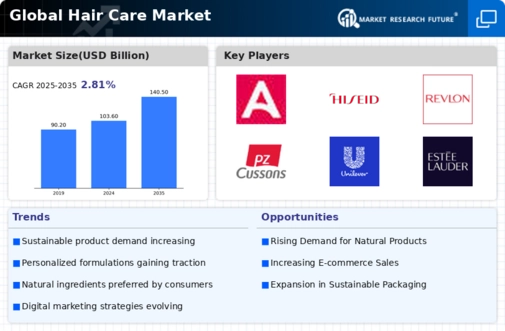


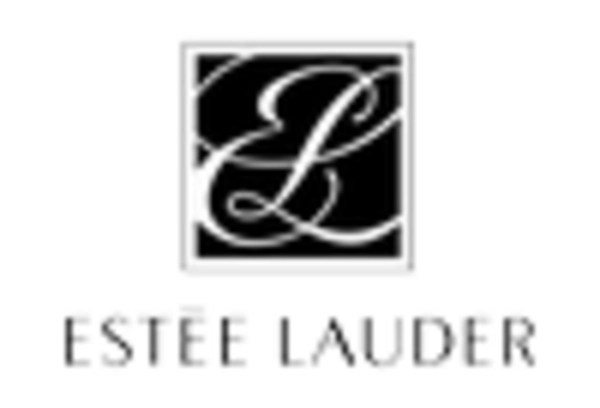
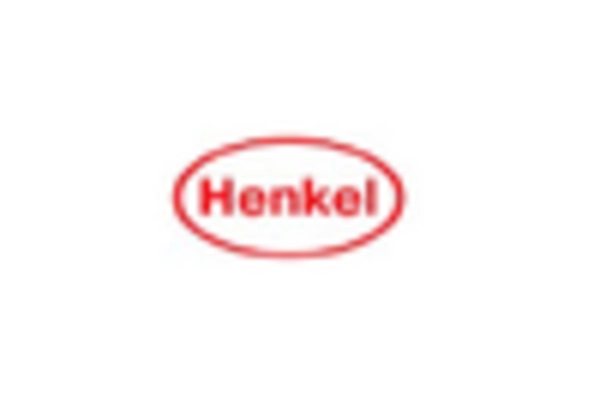
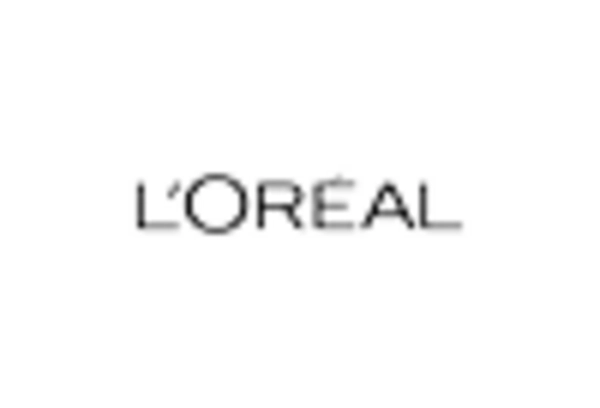
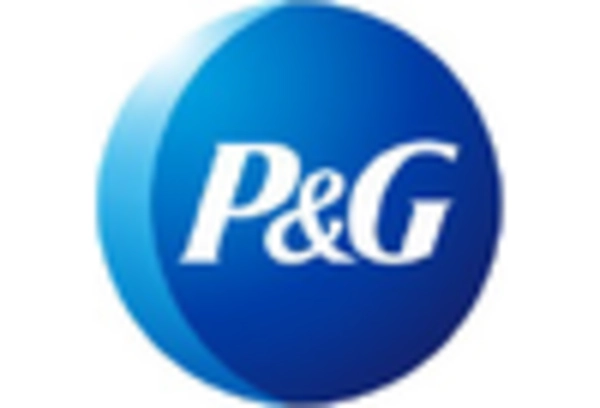


Leave a Comment